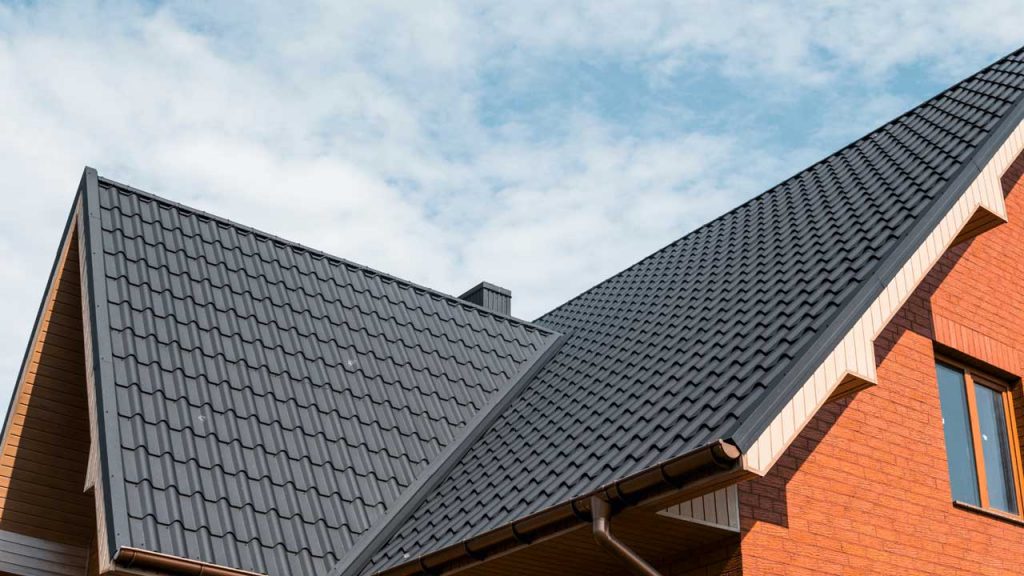Metal roofs are increasingly becoming a popular choice for homeowners due to their energy efficiency and durability. However, there may be questions that arise when considering a metal roofing installation project.
This article seeks to provide an overview of common questions about metal roofs and guidelines on how to get them answered by a professional. From the initial planning stages through the final installation process, it is important to understand all aspects of metal roofing in order to make informed decisions throughout the process.
As such, this article will delve into topics such as the benefits and drawbacks of metal roofing, cost considerations, environmental impact issues, warranty information, and more. By addressing these concerns with expert advice from professionals in the field, readers can ensure that they have access to reliable guidance when making decisions related to metal roofing projects.
Benefits And Drawbacks Of Metal Roofing
Metal roofing has become increasingly popular amongst homeowners due to its energy efficiency and aesthetic appeal.
Metal roofs are available in a variety of finishes, ranging from classic ribbed panels to modern standing seam designs, providing an attractive option suitable for residential structures.
The reflective nature of metal materials can reduce the amount of heat absorbed by a building, leading to lower cooling costs during warmer periods.
In addition, most types of metal roofing will last at least two or three times longer than traditional asphalt shingle roofs, making them cost-effective over time.
When considering the installation of a metal roof, several factors should be taken into account such as climate conditions where the structure is located, local building codes and regulations that may apply based on area and type of material used, and other considerations related to proper installation techniques.
An experienced professional who specializes in metal roofing systems should always be consulted prior to beginning any project in order to ensure safety measures are followed properly and expectations regarding performance results are met.

Cost Considerations For Metal Roofing
The cost associated with metal roofing can be a major factor for homeowners considering the installation of new materials. It is important to consider how long-term savings in energy costs due to the increased efficiency of metal roofs may outweigh initial installation costs.
Metal roofs are known for their superior levels of thermal protection, which reduces utility bills over time and increases overall comfort in your home throughout all seasons.
In addition to these functional benefits, modern metal roofing options offer an array of aesthetic appeal that rivals traditional shingle materials while providing an enhanced level of durability against weather elements like wind, rain, snow, and hail.
With low maintenance requirements and no need for frequent repairs or replacements, metal roofing stands out as an economical investment when it comes to protecting one’s property from the effects of severe weather and temperature changes.
As such, many people find that this type of roofing provides them with both short and long term financial advantages that make it well worth the cost up front.
Environmental Impact And Sustainability
The use of metal roofing has seen an increase in popularity due to its associated environmental benefits. From being highly energy efficient, reducing the amount of air conditioning needed inside a home, to having long life cycles that often last multiple decades, metal roofing is increasingly becoming recognized as a more sustainable material for roof construction than traditional asphalt shingle roofs.
In addition to providing energy savings and extended lifetime performance, metal roofing materials have also been noted for their contribution to lessening global warming impacts when compared with other traditional building materials. A lifecycle analysis conducted by the US Environmental Protection Agency found that non-metallic asphalt shingle waste from tear-off can release significant amounts of volatile organic compounds (VOCs) into the environment.
By contrast, metal roofs are recyclable and made largely out of recycled content leading to fewer emissions with minimal impact on our environment. Metal roofing is also known for its water-resistant properties which result in better runoff management during rainstorms and can help reduce erosion around homes located near bodies of water or steep slopes.
Given these advantages, it’s clear why so many homeowners are choosing metal roofs over other conventional options – they offer cost efficiency while helping further sustainability goals at the same time.
Installation Process And Durability
Metal roofing is a popular choice among homeowners due to its durability and longevity. With metal roofs, there are a variety of styles available that can suit any budget or taste. This range of options also includes ventilation requirements for the installation process which must be taken into consideration when making a decision about what type of roof to install.
The installation process itself involves laying down a series of panels onto an existing structure or building from scratch. It is important to ensure proper fastening in order to guarantee the protection offered by the new roof.
Additionally, it is essential to make sure all components meet local building codes and that appropriate flashing is used at each joint where water may potentially leak through. In this way, you can ensure optimal performance and long-term success with your metal roof system.
Warranties And Maintenance
Metal roofs are renowned for their durability and weatherproofing capabilities. In addition to these features, many metal roof models also come with warranties that provide extra protection. Generally speaking, warranties vary depending on the manufacturer and can last anywhere from 10-50 years.
For instance, if a homeowner purchases an asphalt shingle roof they may only be eligible for a 30 year warranty while most metal roofs offer 50 year warranties.
Proper ventilation systems are essential in extending the life of any roof system including metal roofs. The purpose of ventilating is twofold; it helps keep temperatures consistent throughout the home as well as regulate airflow through the attic space which helps avoid condensation buildup that can cause damage over time.
Properly installed vents will ensure optimal longevity by preventing moisture buildup inside the structure and protecting against extreme weather conditions such as heavy rain or snow fall. Therefore, when considering purchasing a metal roof it is important to take into account whether appropriate ventilation systems have been properly installed prior to installation of your new roofing material.
Building Code Regulations
The building code regulations set in place by local government are intrinsic to the success of any roofing project.
Before beginning a metal roof installation, it is essential for homeowners and contractors to familiarize themselves with applicable permits required as well as fire ratings associated with their chosen materials.
In order to remain compliant and ensure safety throughout the entire process, an experienced professional should be consulted about these specific requirements.
Not only will this help protect against potential liabilities but also guarantee that each step adheres to necessary codes.
The expert advice can provide invaluable assistance in navigating the complexities of local regulations without compromising on quality or performance.

Finding Reliable Professional Advice
When it comes to metal roofs, finding reliable professional advice is essential for ensuring an effective installation.
One of the best ways to find a qualified roofing contractor is through referrals from family members and friends who have had successful installations done in their own homes.
Additionally, homeowners should research contractors online and check reviews to verify that they are experienced with installing different types of roofing materials.
Homeowners should also consider consulting with their insurance provider about coverage for metal roofs before making any decisions.
It’s important to know whether or not your policy covers metal roofs so you can plan accordingly if there are additional costs involved.
Furthermore, speaking with professionals such as architects, engineers, or building inspectors may be helpful when selecting a suitable material for the job.
Taking these steps will ensure that all relevant information is taken into consideration when deciding on the right type of metal roof for your home.
Conclusion
Answering questions about metal roofs is an important part of the process when deciding whether or not to install one.
It’s essential that a professional be consulted in order to gain insight into all aspects of this roofing system, including costs, installation and maintenance requirements, building code regulations, environmental impact, and warranties.
With informed advice from experienced professionals, homeowners can make an informed decision on the best type of roofing for their individual needs.
Taking the time to get answers to common questions regarding metal roofs will help ensure a successful project with maximum protection against weather and other elements.

